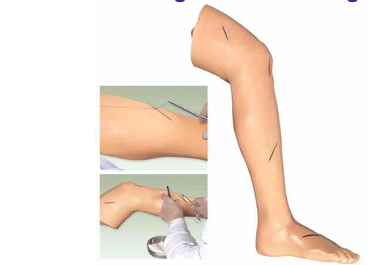رَبِّ زِدْنِي عِلْماً

Advanced Surgical Suture Leg
₹82.00₹22.00
In the realm of modern surgical procedures, the choice of materials and devices plays an essential role in the success of patient outcomes. One of the most critical components in surgical interventions, particularly those involving soft tissue repair, is the surgical suture. Among the various types of sutures available, advanced surgical sutures stand out for their innovative features and applications. When discussing advanced surgical sutures, it is imperative to recognize the significance of their design and material composition. These sutures are engineered to optimize the healing process and minimize complications for patients undergoing leg surgeries. Surgical procedures on the leg, ranging from orthopedic repairs, such as tendon or ligament reconstruction, to vascular and general surgeries, heavily rely on the effectiveness of these suturing techniques. ### Material Composition and Types of Sutures Advanced surgical sutures can be categorized into two main types: absorbable and non-absorbable. 1. **Absorbable Sutures**: These sutures are made from materials that are broken down by the body over time. They are particularly beneficial for internal soft tissue repairs where removal is not feasible. Common materials include polyglycolic acid and polycaprolactone, which are designed to provide adequate tensile strength during the critical healing phase before being resorbed by the body. 2. **Non-absorbable Sutures**: Made from materials that do not dissolve in the body, non-absorbable sutures, such as silk, nylon, and polypropylene, are often preferred for external skin closure or where long-term support is necessary. Innovative coatings and treatments can enhance their performance by reducing friction and tissue drag. ### Advanced Features of Surgical Sutures Recent advancements in surgical suture technology have introduced several features designed to enhance their utility in leg surgeries: - **Antimicrobial Properties**: Many modern sutures are treated with antimicrobial agents to reduce the risk of postoperative infections, a crucial consideration given the fact that surgeries on the leg can be susceptible to infections due to proximity to the ground and exposure. - **Barbed Sutures**: These specially designed sutures have barbs that anchor into the tissue, allowing for secure closure without the need for knots. This feature can facilitate quicker procedures and reduce the time required under anesthesia. - **Smart Sutures**: The incorporation of biosensors in sutures has spurred discussions about 'smart sutures.' These sutures can monitor wound conditions (such as pH levels and temperature changes) and provide real-time data to healthcare providers. This can help in detecting infections or other complications early. ### Application in Leg Surgeries The applications of advanced surgical sutures in leg surgeries are extensive. Some specific areas of interest include: - **Orthopedic Surgeries**: In procedures such as anterior cruciate ligament (ACL) reconstruction or meniscus repair, the use of high-strength, non-absorbable sutures ensures that tissues are held securely during the critical phases of healing. The selection of these sutures is paramount for both the stability of the repair and the functional recovery of the patient. - **Vascular Surgeries**: In vascular surgeries, such as repairing arterial injuries or reconstructing arteries, sutures need to withstand significant blood flow and pressure. Advanced sutures designed to minimize the risk of thrombosis (blood clots) are employed to ensure both safety and efficacy. - **Plastics and Reconstructive Surgery**: In reconstructive procedures involving the leg, where aesthetics and functionality are interconnected, the choice of suture can impact not just healing but the quality of scars. Advanced sutures that promote minimal scarring while providing effective closure are particularly valued. ### Best Practices for Suture Use in Leg Surgeries To maximize the benefits that advanced surgical sutures offer, adherence to best practices is essential. Surgeons should consider the following points: - **Choose the Right Material**: Understanding the specific needs of the surgical site and the patient’s health history will guide the selection of the optimal suture material. - **Proper Technique**: Employing appropriate techniques for suturing, such as tension management and knot tying, is crucial to avoid complications and ensure proper healing. - **Assess Postoperative Wound**: Continuous monitoring and assessment of the surgical site for signs of infection or complications are vital for ensuring the longevity and effectiveness of the sutures used. ### Conclusion The evolution of advanced surgical sutures represents a significant leap forward in the field of surgery. For leg surgeries, where precision, durability, and the minimization of postoperative complications are vital, selecting the appropriate surgical suture can have lasting impacts on patient recovery and outcomes. As material science advances and new technologies emerge, the future of surgical sutures promises even greater innovations that will enhance surgical techniques and improve the standard of care for patients undergoing leg surgery.
Training
Providing essential healthcare training and simulation solutions.
COntacts
Support
info@medisureinternational.com
+91 9972123423
© Medisure. All Rights Are Reserved
Crafted with ❤️by Influence Kashmir
